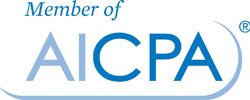Increase your efficiency by documenting business procedures
May 2015
Addressing customer and vendor demands, keeping the shelves stocked with fresh products, ensuring that operating costs don’t eat up an inordinate share of sales revenues — these pressures and many more can crowd out the seemingly inconsequential job of documenting your company’s policies and procedures. But failure to develop and maintain written procedures is often a contributing factor behind operational inefficiencies, customer complaints, employee turnover, even fines and lawsuits.
Let’s say, for example, that your company manufactures furniture. Without written procedures, employees are free to construct each item according to their own inclinations. As a result, the assembly process is inconsistent. This leads to excessive rework and higher per-item costs. If product defects aren’t caught in time, quality begins to suffer. Customers complain and take their business elsewhere. Over time, employees become frustrated because management’s expectations aren’t apparent, which results in plummeting morale and higher staff turnover. In some industries, a lack of properly documented procedures may even cause the company to run afoul of government regulations, leading to fines or lawsuits.
But for a small company, putting your processes and procedures in writing needn’t be an onerous task.
Start with an overall flowchart, then drill down. First document “the big picture.” Set up “swim lanes” that clearly delineate each person’s or division’s responsibility. In the example of the company that makes furniture, you might want to start the process flow with a box that depicts the purchasing department ordering raw materials. Flowcharts should be clear and simple so even a new trainee can understand how your company produces goods and gets paid.
Once the overall process is documented to your satisfaction, take it to other divisions to make sure they’re in agreement. Then develop similar flowcharts for each sub-process depicted. Add detailed narratives in a separate area of the flowchart, then use those narratives to develop checklists and/or standard operating procedures. At some point, you’ll want the procedures to be so detailed that a new employee can join your team and be productive without extensive on-the-job training.
After written procedures and policies are in place, revisit them at least annually. Make sure they’re current and look for ways to make each process more efficient. If properly and consistently implemented, well-documented procedures can increase the quality of your products and services, minimize risk, and strengthen your bottom line.
Customer service
Providing excellent customer service is crucial for any business, whether that service is provided across the counter in a local brick-and-mortar..
Read More
Business loan
Often small businesses must rely on debt to launch operations during crucial start-up years, expand into new markets, or weather..
Read More
Internal audit
Taking a systematic look at your operations and finances — sometimes called an internal audit — is often the best way to improve your company’s..
Read More
Internal audit
You and your business partner have decided to part ways. The reasons are numerous. Perhaps your partner isn’t delivering the results originally..
Read More
Members



